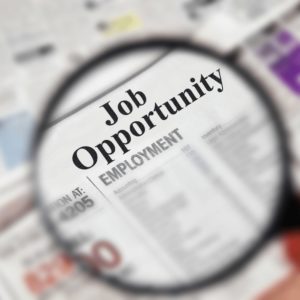Behavioural interviews explained
Once used to assess senior and executive candidates, behavioural interviewing is now used to assess candidates at all levels and across a range of industries.
CareerOne asked Malcolm Waldock, National Manager – People & Performance – Ambit Group to brief us on how the technique works.
“The theory behind it is that the best predictor of future performance is past performance,” Waldock told careerone.com.au. He said “behaviours” tend to be linked to “competencies”.
An example of a behaviour would be co-operative and a competency working well in a team. Candidates will be required to draw on real-life experiences to explain how they tackle various issues.
Here are example questions careerone.com.au found after some web surfing:
- “Give me an example of a stressful situation you dealt with that demonstrates your coping skills?”
- “Describe a time when you had to deal with a difficult co-worker or customer?”
- “Tell me about a time when you took the initiative/lead to head off a problem?”
- “Tell me a time when you failed and the lesson you learnt from the experience?”
Waldock said a question could also have multiple parts. For example:
- “Give me an example of a time when you had to work with someone who was difficult to get along with? In what way was this person difficult? How did the relationship progress? What did you learn from the experience?”
- “What the interviewer is looking for here is how accurately you state the situation, how well you outline the situation,” said Waldock.
Other behaviours/competencies an interviewer might want to test include leadership, analytical skills, ability to work well under pressure, drive, self-discipline, high level of motivation, initiative.
Another sample question: “Give me an example of a time when you had to analyse an established work process. What were the problems? What were the solutions? What was the result of your work?”
Waldock said that behavioural interviewing is also a good way of testing someone’s verbal skills and how well they can communicate in front of a group.
“You need to keep the focus on yourself ‘this is the action I took’,” he said.
To prepare, write out some questions and rehearse the answers either to the mirror or a friend. Go through your resume to refresh your memory about your professional history. You can use experiences outside work too such as community work or sports if it will clearly demonstrate your point and you can’t think of a work example.
With the proper preparation, this is great news. No guessing at answers. You have all the answers.
Waldock suggests candidates use the “SAO” method Situation/Action/Outcomes – when preparing for the interview and then during the interview itself. Using Waldock’s previous example about dealing with a difficult person at work:
Situation: Outline the situation where you were working with a person who was “difficult” including why they were difficult and how this impacted on you and what you were trying to achieve in your job.
Action: Outline the steps you took to resolve the situation.
Outcomes: Outline the benefits or consequences of the action that you took. You could also discuss what you learnt from the experience.
Try and do as much homework as possible regarding what the employer is looking for. Get a copy of the position description and work out the competencies involved in the job. Start with a visit to the company’s website.
Spend time reviewing the range of experiences you have collected from your career. The more thorough your preparation here the better. During the interview you will need to reflect back and then outline these experiences relatively quickly and in sufficient detail so homework is important.
“Reflect back on your career history and think of specific examples you can come up with quickly,” said Waldock.
“These are not just times describing how wonderful you are but examples that demonstrate your key strengths as well as times when you have turned a negative situation into a positive result,” said Waldock. “Review your resume in detail because it is will trigger those memories,” he said. “Make sure it all matches up and there are no unexplained gaps.”
Next, practice. Choose a selection of questions and role-play with someone else. You can also do what sportspeople do and use visualisation imagine yourself being asked a question and then answering that question.
“When you get asked an initial question there may well be follow up questions to probe deeper or test the validity of the knowledge you claim to have gained,” said Waldock.
“If you stick to the SAO method you will not get waffly.”



